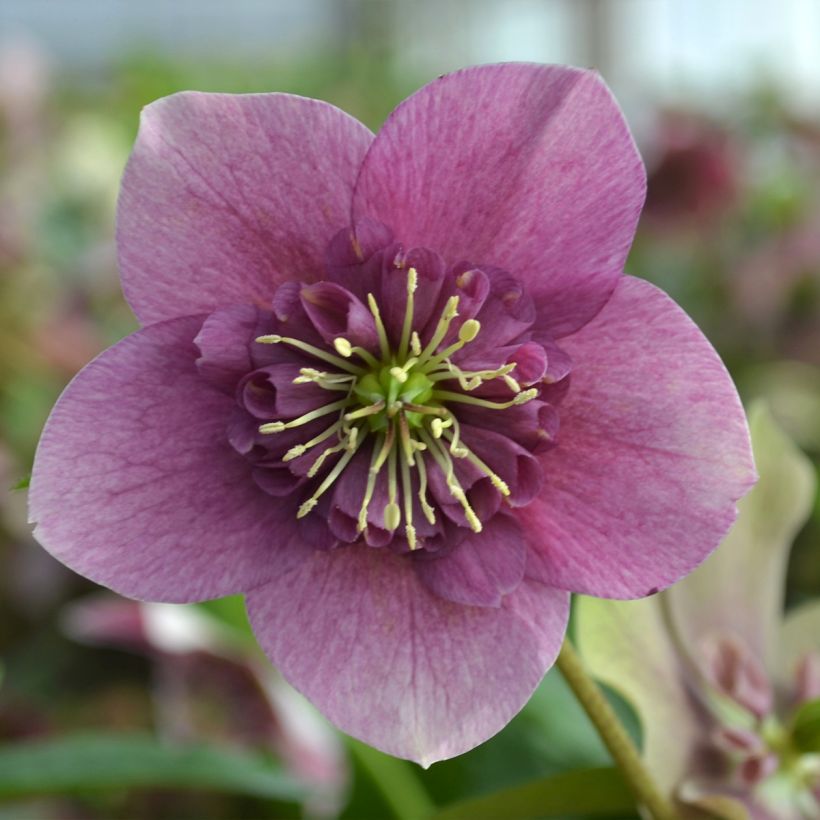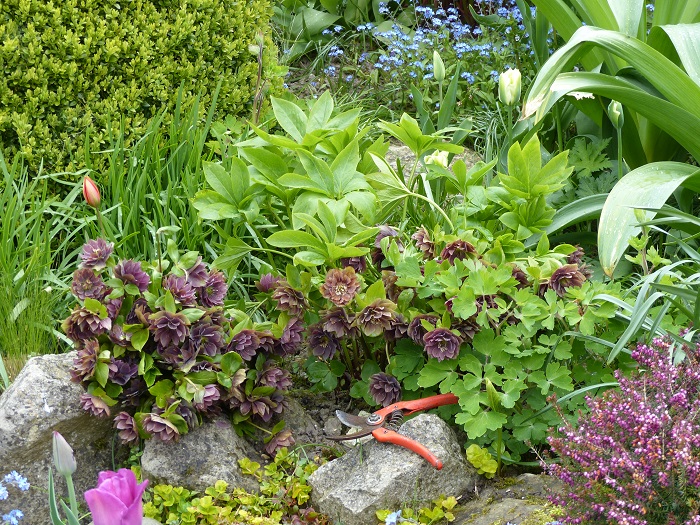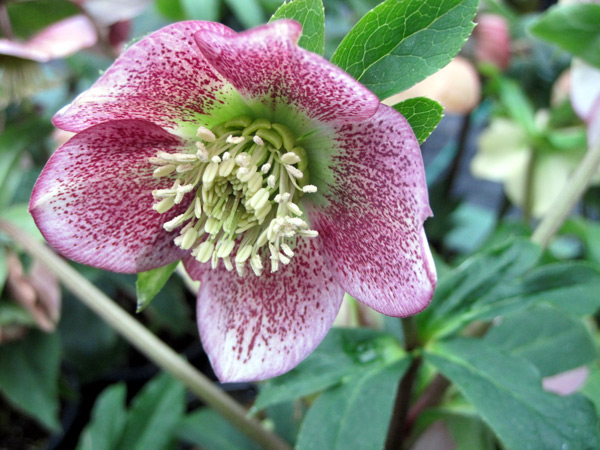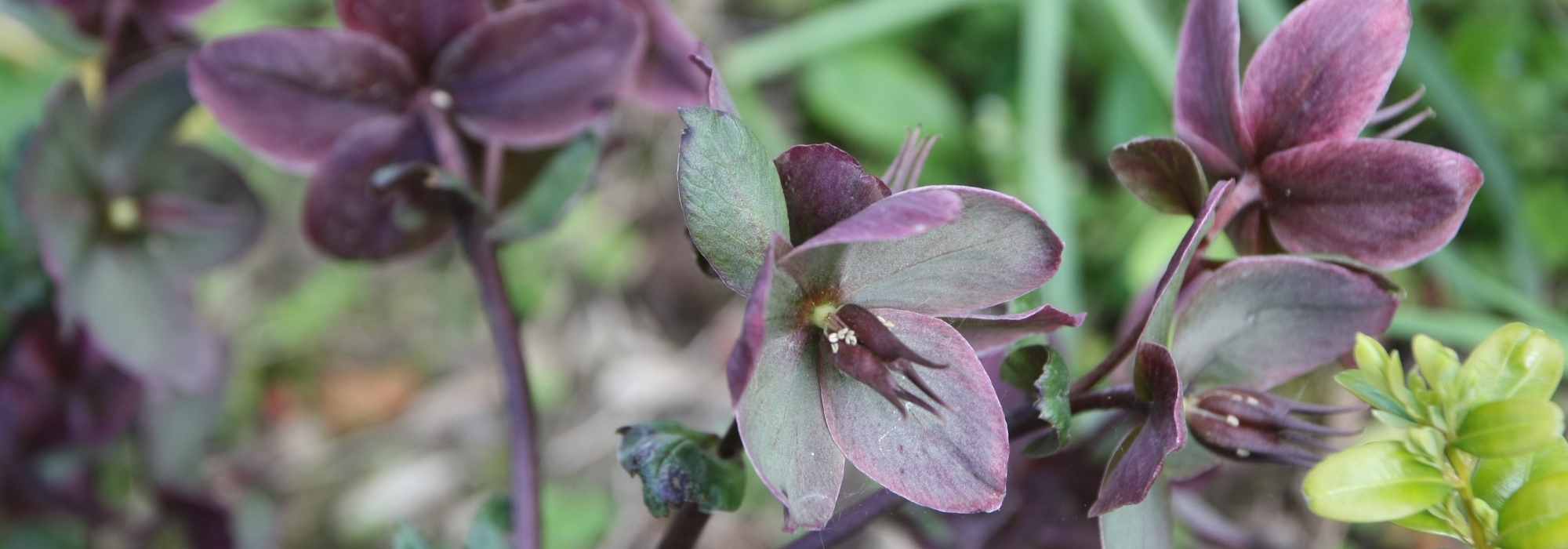

Hellébore ViV® Teresa - Helleborus orientalis


Hellébore ViV® Teresa - Helleborus orientalis
Helleborus hybridus ViV Teresa
Helleborus x hybridus ViV® Teresa
Lenten Rose, Oriental Hellebore
Special offer!
Receive a €20 voucher for any order over €90 (excluding delivery costs, credit notes, and plastic-free options)!
1- Add your favorite plants to your cart.
2- Once you have reached €90, confirm your order (you can even choose the delivery date!).
3- As soon as your order is shipped, you will receive an email containing your voucher code, valid for 3 months (90 days).
Your voucher is unique and can only be used once, for any order with a minimum value of €20, excluding delivery costs.
Can be combined with other current offers, non-divisible and non-refundable.
Home or relay delivery (depending on size and destination)
Schedule delivery date,
and select date in basket
This plant carries a 12 months recovery warranty
More information
We guarantee the quality of our plants for a full growing cycle, and will replace at our expense any plant that fails to recover under normal climatic and planting conditions.

Would this plant suit my garden?
Set up your Plantfit profile →
Description
The Oriental Hellebore ViV Teresa is a fast-growing variety with winter flowering. Blooming from January and for several weeks, this Lenten Rose offers Anemone-like pink flowers, speckled with small darker spots, adorned with a central collar surrounding the stamens. Forming a compact clump, it is a robust and hardy perennial, easy to grow in all regions, even in heavy soil, although it prefers humus-rich and not too dry soils. Grow it in partial shade, at the base of trees, alongside other perennials that appreciate shade, or even in a pot, which will perfectly suit its compact habit.
The ViV Hellebores are varieties derived from in-vitro multiplication. Unlike varieties derived from seed multiplication, hellebores produced by in-vitro guarantee a flowering that is identical to the variety they come from. They therefore have the same genetic characteristics as the mother plant, are more vigorous and develop uniformly.
The Hellebore (or Christmas Rose) Teresa belongs to the Ranunculaceae family, which includes about sixty genera and approximately 2500 species, mostly herbaceous. The type species Helleborus orientalis is native to Greece, Turkey, and the central and eastern Caucasus. It is a perennial plant that hybridises very easily with other species to produce, through random seedlings, hybrids with diverse colours and forms, so much so that these hybrids are rarely given variety names. They are distinguished by their shape and colour characteristics. Oriental Hellebores are hardy plants that can withstand temperatures as low as -15°C, naturally growing in forests, thickets, and clearings up to 2,000 m (7ft) altitude.
This variety is also known as Anemone-flowered Hellebore, a group that bears some resemblance in terms of flowering to another member of the Ranunculaceae family. It is a compact and fast-growing variety that forms a clump only 35 to 45 cm (14 to 18in) tall, with an equivalent width. Its foliage consists of palmate basal leaves, which are slightly dentate, dark green and glossy. These are evergreen leaves in winter, which actually live for only 8 months and are regularly replaced by new leaves. Teresa blooms in the middle of winter, mainly from January to February. Its flowers, a lovely pink with tiny darker spots, consist of 5 well-spread petals, slightly acuminate at the tip, adorned with a central collar, itself surrounding a cluster of yellow stamens. Particularly aesthetic, these flowers open at the end of long peduncles that stand out from the mass of evergreen foliage, making them highly visible. They are inclined downwards, as if to show off, but in reality to let water slide off like an umbrella and protect the delicate centre from rotting. Hellebores do not like to be moved once established, and young shoots may take some time to flower. Therefore, be careful to choose their location carefully when planting.
This superb Hellebore is a precious perennial that brings joy to winter with its beautiful pink flowers. It will be perfect for brightening up a partially shaded bed during the dark days of winter. To create an attractive bed during this time of year, plant trees with decorative bark that will provide shade for our Hellebore. The Prunus maackii Amber Beauty, or Manchurian Cherry, will be perfect for this purpose. Easy to grow in any soil, its stunning orange bark is highly decorative in winter, and in addition to its white spring flowers, its foliage turns a beautiful color in autumn. The magnificent Himalayan Birch (Betula utilis jacquemontii) with possibly the whitest bark of the genus is also stunning in winter, as well as in autumn when its foliage turns yellow. Plant the remarkable Cornus alba Baton Rouge, a red-stemmed Dogwood whose foliage turns purple in autumn, on the edge of the bed, and you will have created a beautiful winter scene.
Helleborus hybridus ViV Teresa in pictures






Flowering
Foliage
Plant habit
Safety measures
Botanical data
Helleborus
x hybridus
ViV® Teresa
Ranunculaceae
Lenten Rose, Oriental Hellebore
Cultivar or hybrid
ingestion
Cette plante est toxique si elle est ingérée volontairement ou involontairement.
Ne la plantez pas là où de jeunes enfants peuvent évoluer, et lavez-vous les mains après l'avoir manipulée.
Pensez à conserver l'étiquette de la plante, à la photographier ou à noter son nom, afin de faciliter le travail des professionnels de santé.
Davantage d'informations sur https://plantes-risque.info
Planting and care
The Hellebore Teresa grows in any neutral to moderately calcareous soil, rich, light or clay, in partial or light shade, while being sheltered from cold and strong winds. This perennial should be planted from early autumn to spring. It thrives in deep, well-prepared soil mixed with a quantity of organic matter. To fertilise, use bone meal or another organic fertilizer. Water the plants well after planting and then add a layer of mulch 2 to 5 cm (1 to 2in) thick. Regularly remove faded leaves to improve flowering. Ensure a planting distance of 30 to 40 cm (12 to 16in) between each plant to encourage their development. Hellebores do not tolerate waterlogged ground, as it may cause it to rot.
The roots should not completely dry out in summer. Hellebores can be affected by a fungal disease transmitted by aphids, called black spot disease. Remove any browned leaves when the flower buds appear. Remove faded flowers after the seeds fall. They may also suffer from grey rot or die from collar rot. This often occurs due to poor growing conditions, in excessively wet situations.
On a balcony or terrace, plant this perennial in a pot 4 to 5 times larger than its size, as it needs space to develop its root system. Very hardy, this Hellebore can withstand freezing temperatures down to -15°C or even lower.
Planting period
Intended location
Care
Planting & care advice
This item has not been reviewed yet - be the first to leave a review about it.
Similar products
Haven't found what you were looking for?
Hardiness is the lowest winter temperature a plant can endure without suffering serious damage or even dying. However, hardiness is affected by location (a sheltered area, such as a patio), protection (winter cover) and soil type (hardiness is improved by well-drained soil).

Photo Sharing Terms & Conditions
In order to encourage gardeners to interact and share their experiences, Promesse de fleurs offers various media enabling content to be uploaded onto its Site - in particular via the ‘Photo sharing’ module.
The User agrees to refrain from:
- Posting any content that is illegal, prejudicial, insulting, racist, inciteful to hatred, revisionist, contrary to public decency, that infringes on privacy or on the privacy rights of third parties, in particular the publicity rights of persons and goods, intellectual property rights, or the right to privacy.
- Submitting content on behalf of a third party;
- Impersonate the identity of a third party and/or publish any personal information about a third party;
In general, the User undertakes to refrain from any unethical behaviour.
All Content (in particular text, comments, files, images, photos, videos, creative works, etc.), which may be subject to property or intellectual property rights, image or other private rights, shall remain the property of the User, subject to the limited rights granted by the terms of the licence granted by Promesse de fleurs as stated below. Users are at liberty to publish or not to publish such Content on the Site, notably via the ‘Photo Sharing’ facility, and accept that this Content shall be made public and freely accessible, notably on the Internet.
Users further acknowledge, undertake to have ,and guarantee that they hold all necessary rights and permissions to publish such material on the Site, in particular with regard to the legislation in force pertaining to any privacy, property, intellectual property, image, or contractual rights, or rights of any other nature. By publishing such Content on the Site, Users acknowledge accepting full liability as publishers of the Content within the meaning of the law, and grant Promesse de fleurs, free of charge, an inclusive, worldwide licence for the said Content for the entire duration of its publication, including all reproduction, representation, up/downloading, displaying, performing, transmission, and storage rights.
Users also grant permission for their name to be linked to the Content and accept that this link may not always be made available.
By engaging in posting material, Users consent to their Content becoming automatically accessible on the Internet, in particular on other sites and/or blogs and/or web pages of the Promesse de fleurs site, including in particular social pages and the Promesse de fleurs catalogue.
Users may secure the removal of entrusted content free of charge by issuing a simple request via our contact form.
The flowering period indicated on our website applies to countries and regions located in USDA zone 8 (France, the United Kingdom, Ireland, the Netherlands, etc.)
It will vary according to where you live:
- In zones 9 to 10 (Italy, Spain, Greece, etc.), flowering will occur about 2 to 4 weeks earlier.
- In zones 6 to 7 (Germany, Poland, Slovenia, and lower mountainous regions), flowering will be delayed by 2 to 3 weeks.
- In zone 5 (Central Europe, Scandinavia), blooming will be delayed by 3 to 5 weeks.
In temperate climates, pruning of spring-flowering shrubs (forsythia, spireas, etc.) should be done just after flowering.
Pruning of summer-flowering shrubs (Indian Lilac, Perovskia, etc.) can be done in winter or spring.
In cold regions as well as with frost-sensitive plants, avoid pruning too early when severe frosts may still occur.
The planting period indicated on our website applies to countries and regions located in USDA zone 8 (France, United Kingdom, Ireland, Netherlands).
It will vary according to where you live:
- In Mediterranean zones (Marseille, Madrid, Milan, etc.), autumn and winter are the best planting periods.
- In continental zones (Strasbourg, Munich, Vienna, etc.), delay planting by 2 to 3 weeks in spring and bring it forward by 2 to 4 weeks in autumn.
- In mountainous regions (the Alps, Pyrenees, Carpathians, etc.), it is best to plant in late spring (May-June) or late summer (August-September).
The harvesting period indicated on our website applies to countries and regions in USDA zone 8 (France, England, Ireland, the Netherlands).
In colder areas (Scandinavia, Poland, Austria...) fruit and vegetable harvests are likely to be delayed by 3-4 weeks.
In warmer areas (Italy, Spain, Greece, etc.), harvesting will probably take place earlier, depending on weather conditions.
The sowing periods indicated on our website apply to countries and regions within USDA Zone 8 (France, UK, Ireland, Netherlands).
In colder areas (Scandinavia, Poland, Austria...), delay any outdoor sowing by 3-4 weeks, or sow under glass.
In warmer climes (Italy, Spain, Greece, etc.), bring outdoor sowing forward by a few weeks.


















































